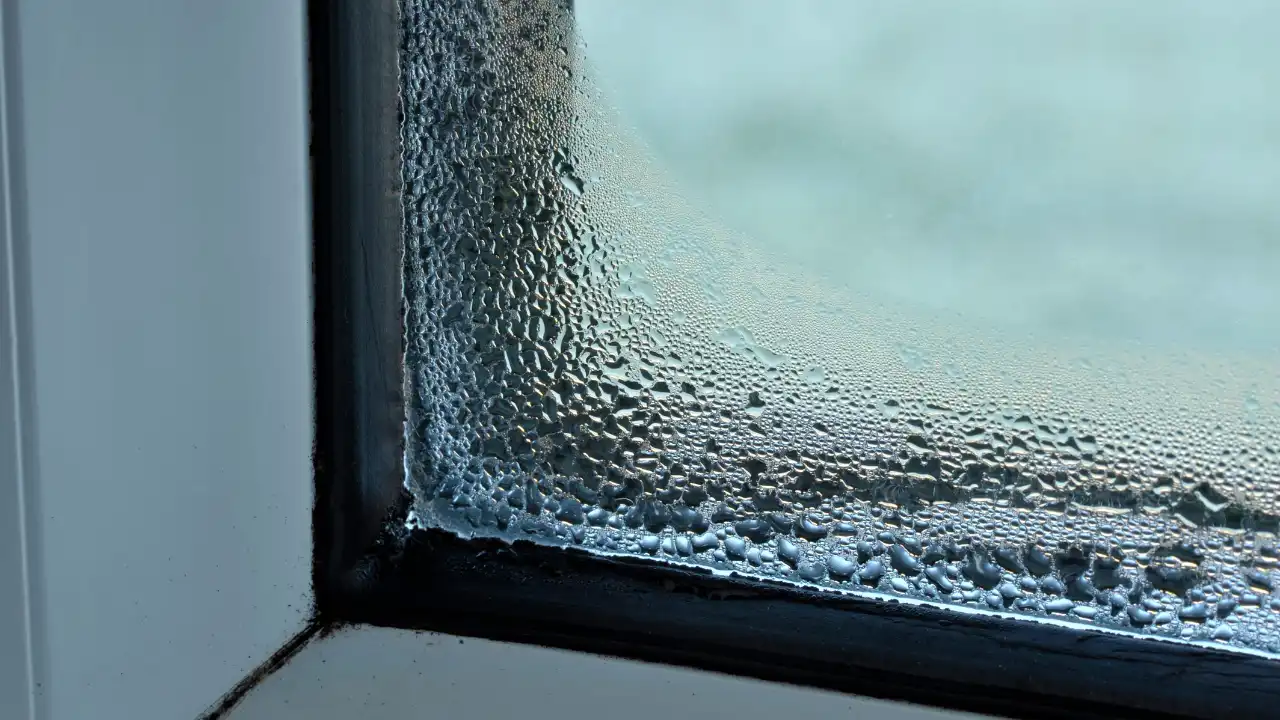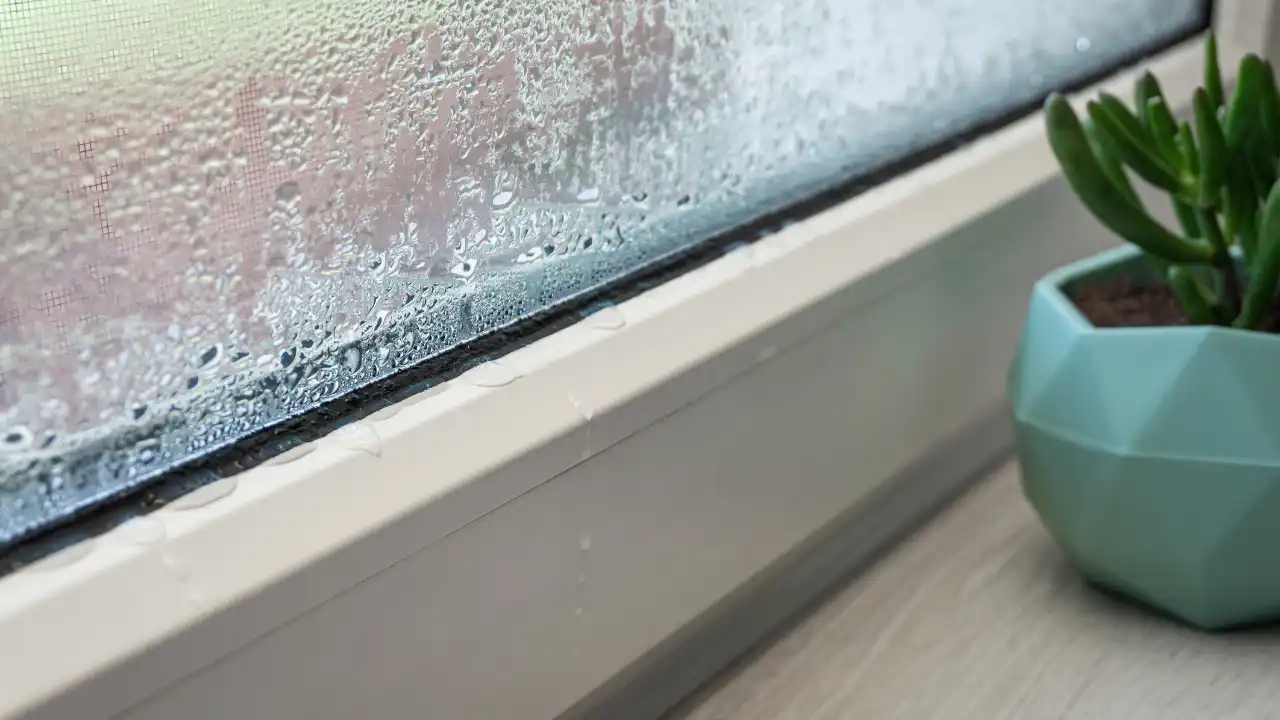Living in Parker, CO, you may have noticed your windows “sweating” on chilly mornings. This isn’t just a minor nuisance; condensation on windows can hint at hidden moisture problems that affect your comfort, health, and home’s energy efficiency. Let’s break down why it happens and what you can do about it.
Why Does Condensation Form on Your Windows?
Condensation forms when warm indoor air meets a cold window surface, dropping the air temperature below the dew point. This causes water vapor to turn into visible droplets on the glass. Factors like indoor humidity, poor ventilation, and the temperature difference between inside and out are key culprits.
Common Sources of Moisture Inside Homes
According to the U.S. Department of Energy, condensation forms when moist air comes into contact with a cooler surface and reaches the dew point.
Many everyday activities contribute to indoor humidity, which in turn leads to condensation on your windows. Cooking without using extractor fans, taking hot showers in poorly ventilated bathrooms, or even drying clothes indoors all release moisture into the air. Add in-houseplants, basements prone to dampness, or unnoticed plumbing leaks, and you’ve got the perfect storm for window condensation.
A major contributor I often see during home assessments in Parker, CO, is people using humidifiers without monitoring levels. I once helped a family who ran their humidifier all winter to combat dry air, but it created so much excess moisture that their brand-new double glazing fogged up daily. A simple dehumidifier and improved ventilation solved the problem.
Even how we heat our homes impacts moisture levels. Sealed windows with no airflow, combined with indoor temperature differences, trap moist air. Over time, this can affect your home’s thermal insulation and create conditions for mould growth.
Types of Window Condensation
There are three main types of condensation you might notice on your windows. The most common is interior condensation, where moist indoor air meets the cold glass surface. This is typical during cold Parker winters, especially if your ventilation is poor or indoor humidity is high.
Next is exterior condensation, which forms when dew collects on the outside of your windows. This usually happens on energy-efficient windows that stay cool enough overnight to let outdoor moisture condense. Unlike interior fog, this type signals good insulation and isn’t a cause for concern.
Finally, between-pane condensation happens inside double-glazing or triple-glazing units if the seal fails. This lets moisture into the air gap, often requiring window replacement to restore performance.
Why Condensation Is More Common in Winter
Condensation on windows is far more noticeable during winter, especially in places like Parker, CO, where outdoor temperatures drop dramatically. The reason lies in the temperature difference between your warm indoor air and the cold exterior glass. When this warm, moist air hits the cold surface, it cools quickly and crosses the dew point, forming water droplets.
In winter, we also tend to keep our homes sealed tight to preserve heat, which reduces ventilation. This traps indoor humidity from sources like cooking, showers, and houseplants, making the problem worse. The greater the thermal barrier between inside and out, the more likely you’ll see fogging on your windows during those freezing mornings.
Impact of Window Condensation on Health and Home
Persistent condensation can cause more than just foggy windows, it can have serious effects on both your home and your health. When moisture collects on window frames, especially wooden frames or older uPVC, it can lead to mould growth. Over time, this damages the frames, weakens seals, and allows drafts that reduce your home’s energy efficiency.
On the health side, mould spores triggered by constant window dampness can contribute to respiratory issues, particularly in children, the elderly, or anyone with asthma or allergies. Studies have linked mould exposure to immune system stress and skin irritation as well. In Parker’s winter months, when we spend more time indoors with limited ventilation, this risk increases.
Beyond visible mould, excess indoor humidity can damage paint, plaster, and even insulation materials. If left unchecked, moisture can seep into walls and ceilings, causing structural deterioration over time. What starts as harmless-looking window condensation can become a costly problem. How Window Type Affects Condensation.

The type of window you have makes a big difference in how much condensation you’ll see. Single-pane windows offer little protection against the cold, so the interior glass surface gets chilly fast, inviting moisture buildup. Double-glazing and triple-glazing help by creating an air gap that keeps the inner glass warmer.
Modern Low-E glass and insulated glass units reduce heat loss and limit condensation. But even high-performance windows can fog if the seal fails, letting moisture into the space between panes. That’s where working with a trusted local expert like Hansen Glass can help. They offer custom insulated units (IGUs) to restore your window’s efficiency and clarity.
If your windows are older or showing signs of seal deterioration, upgrading through a professional installer ensures you get the best thermal insulation and condensation control for Parker’s climate.
How to Prevent and Reduce Condensation
Preventing condensation starts with managing your indoor humidity. Use a dehumidifier or run extractor fans when cooking or showering. Make sure your home’s ventilation is effective — even cracking a window occasionally helps let moist air escape.
Upgrading your windows can make a major difference. Double glazing or triple glazing with Low-E glass reduces heat transfer, keeping the inner glass surface warmer and less prone to condensation. If your windows have seal failure or visible between-pane condensation, Hansen Glass offers expert insulated glass replacement tailored for Parker’s climate.
Other tips include insulating around windows, keeping blinds slightly open at night to promote air circulation, and ensuring your HVAC system is well-maintained. In many cases, a combination of better window technology and improved moisture control strategies keeps condensation at bay.
When to Seek Professional Help for Window Condensation
Sometimes, no matter how much you improve ventilation or reduce indoor humidity, condensation keeps returning. This can be a sign of seal failure in your double glazing or damage to your insulated glass unit. Persistent between-pane condensation means moisture has breached the air gap, and DIY fixes won’t solve it.
In these cases, it’s best to consult local experts. A trusted company like Hansen Glass in Parker, CO can assess your windows and provide solutions like insulated glass replacement, custom glazing upgrades, or seal repairs, often without needing to replace the entire window. Replacing your IGUs is a Significant Cost savings when compared to replacing a whole window system. Over the years, Hansen Glass has saved customers tens of thousands of dollars by replacing UGUs instead of replacing the entire window system.
In fact, Hansen Glass has experienced that 90% of the time, IGUs can be replaced when other companies have recommended whole window replacement. In one case, Hansen Glass has saved a customer over $80,000 by repairing the window versus a quote from a major window manufacturer that wanted to replace every whole window system in the house. DO NOT FALL FOR THE WHOLE WINDOW SALES PITCH from major window companies. Check with Hansen before for a real, honest assessment of your situation. Of course, if you do need whole windows, we do that as well.
Seeking professional help ensures your home stays energy efficient, dry, and comfortable, especially during Parker’s cold winters.
Don’t let window condensation compromise your home’s comfort or value. If you’re in Parker, CO, or the surrounding area, Hansen Glass is ready to help with professional insulated glass replacement, seal repairs, and custom glazing upgrades. Contact us today.
Final Thoughts
Condensation on your windows might seem harmless at first, but it can signal underlying issues with moisture, ventilation, or your window’s seal integrity. By understanding the causes and taking steps to manage indoor humidity, upgrade glazing, or improve insulation, you can protect both your home’s structure and your family’s health.
If you notice persistent between-pane condensation or suspect a seal failure, don’t wait, consult a trusted local expert like Hansen Glass in Parker, CO. Their custom glass solutions can restore clarity and efficiency without a full window replacement.
Keeping your windows dry and clear doesn’t just improve comfort, it protects your investment and peace of mind. Get Expert Window Solutions in Parker, CO
FAQs
Is exterior window condensation a problem?
No, exterior condensation is usually just dew forming when the outer glass cools below the dew point. It’s common on energy-efficient windows and shows that your insulation is working well.
Should I replace my windows if I have condensation between panes?
Not necessarily. If you see between-pane condensation, it often means the seal on your double glazing has failed. In many cases, companies like Hansen Glass can replace the insulated glass unit without replacing the full window frame.
What’s the best way to stop condensation on windows?
Control indoor humidity using a dehumidifier, ensure good ventilation, and consider upgrading to Low-E glass or triple glazing. Professional assessment can help identify hidden causes like seal failure or poor thermal insulation.
Can condensation damage my home?
Yes. Persistent moisture can cause mould, damage wooden frames, ruin paint, and even affect insulation inside your walls over time.


